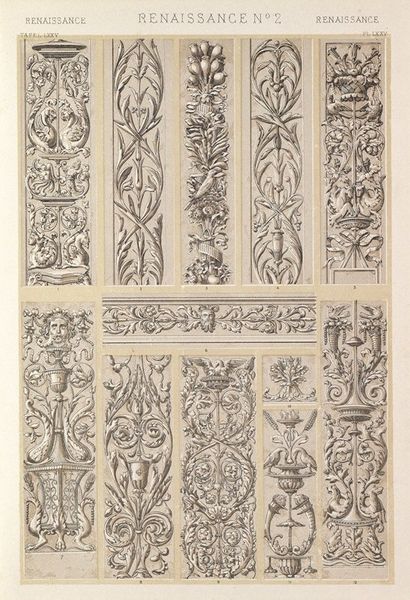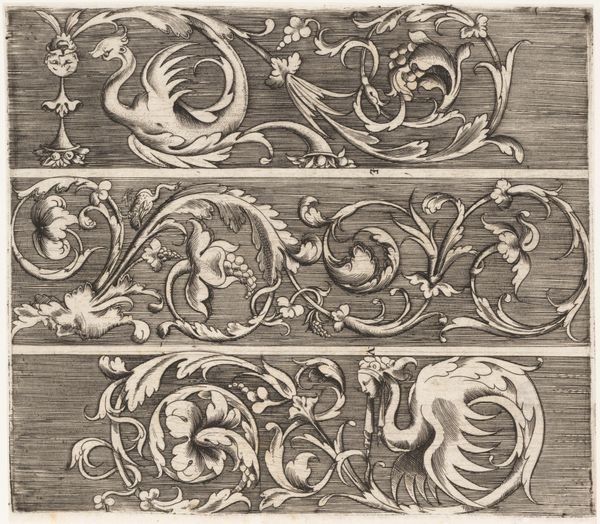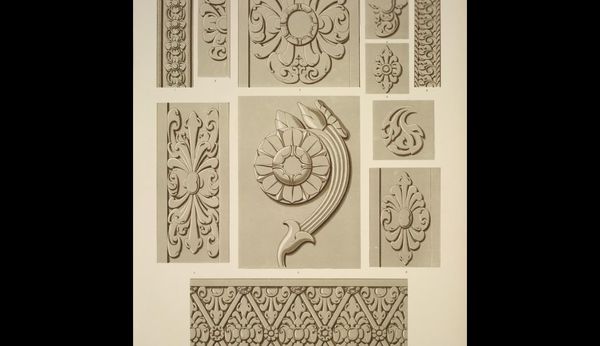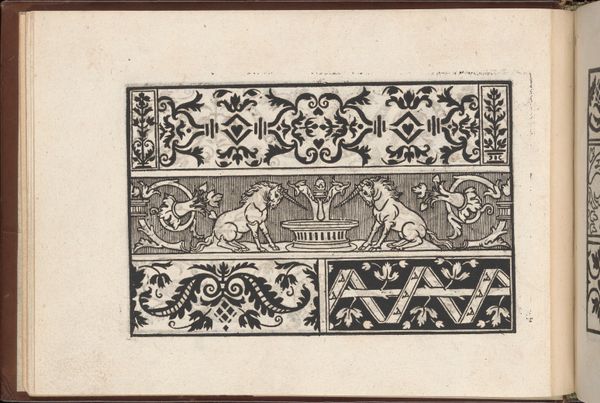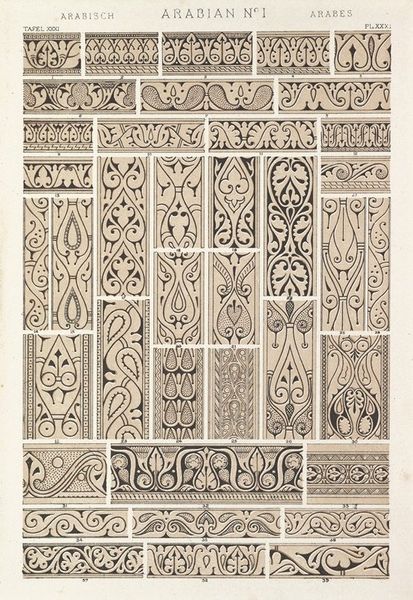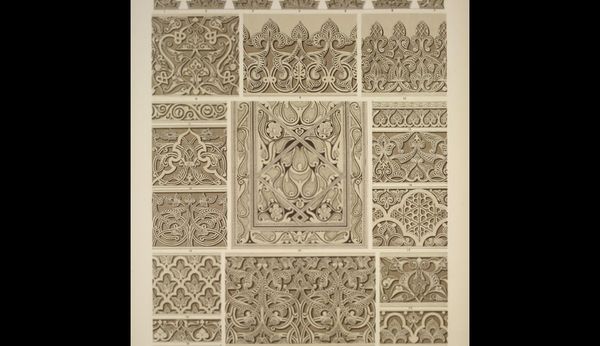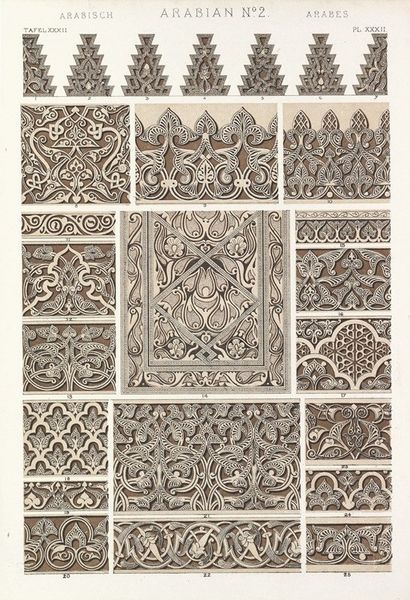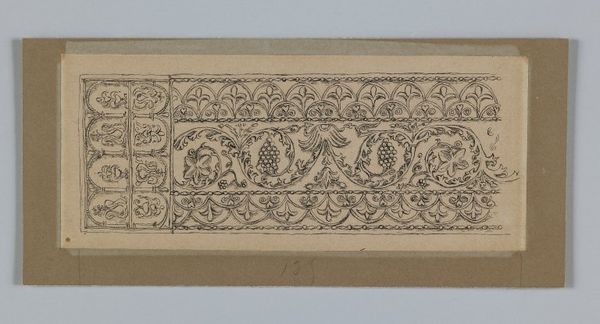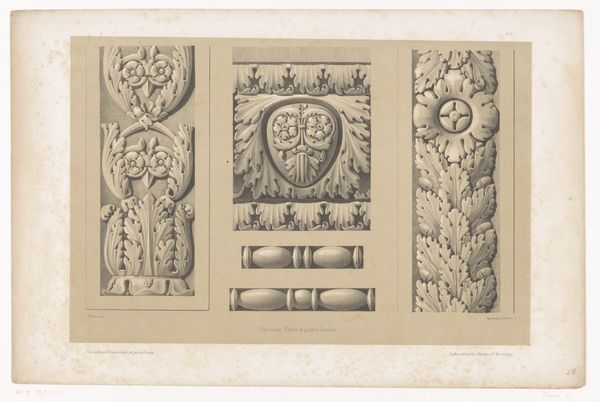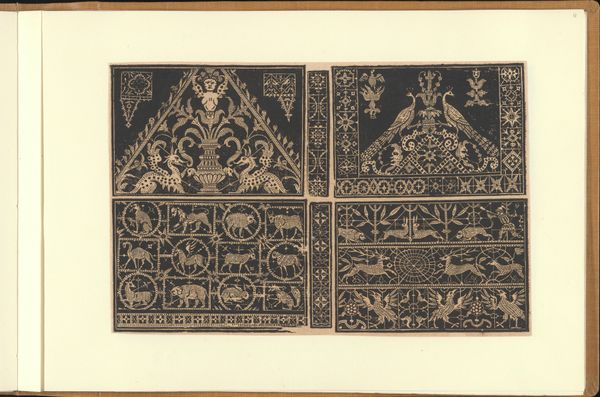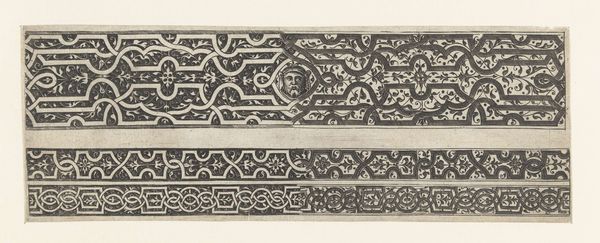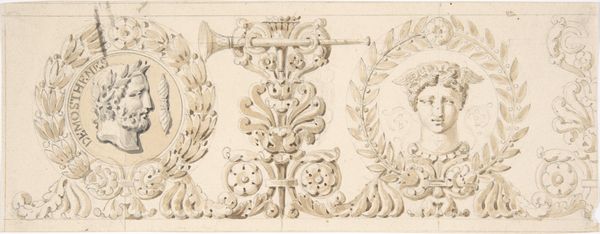
Faisan et ronces, bois sculpté à jour. Papillons et libellules, marqueterie. Canards et iris, pochoir. 1897
0:00
0:00
carving, wood
#
pattern heavy
#
natural stone pattern
#
naturalistic pattern
#
art-nouveau
#
carving
#
pattern
#
landscape
#
geometric pattern
#
pattern background
#
ethnic pattern
#
geometric
#
vertical pattern
#
wood
#
pattern repetition
#
textile design
#
decorative-art
#
layered pattern
Copyright: Public Domain: Artvee
Editor: So, we're looking at "Faisan et ronces, bois sculpté à jour. Papillons et libellules, marqueterie. Canards et iris, pochoir" by Maurice Pillard Verneuil, from 1897. It features different techniques with wood, including carving, marquetry and stenciling, so rich in detail, yet somehow calming. What strikes you most about this piece? Curator: I'm drawn to how Verneuil elevates what might be considered craft to the level of fine art. Look at the labor involved in the wood carving alone – the meticulous removal of material to create these naturalistic forms. This period really saw a shift in attitudes towards materials. Consider the social context: how readily available were these specific woods, the dyes and stencils required, and who was the intended consumer of this type of design? Editor: That’s a really interesting point about the intended consumer. Would this have been something for the upper classes? Curator: Likely. The very act of wood carving, particularly at this level of detail, suggests access to specialized tools and training. These motifs also reflect an engagement with naturalism and, potentially, a desire to reconnect with the natural world, maybe because that opportunity would have been rare to most people. It’s interesting to examine how Verneuil’s process incorporates both organic and geometric elements. Do you see that tension as well? Editor: Absolutely. The patterns almost feel mass-produced, but the actual creation of this artwork is extremely labor-intensive. Curator: Exactly. This tension between mechanization and handicraft, nature and industry, defined much of the late 19th century. By studying Verneuil's materials and methods, we can glean a greater understanding of these socio-economic forces at play. Editor: It's amazing how focusing on the materials and process opens up so many layers of meaning. I hadn't thought about it that way before. Curator: That's the power of a materialist lens! It gives us a grounded way to engage with history through the things people made and used.
Comments
No comments
Be the first to comment and join the conversation on the ultimate creative platform.
